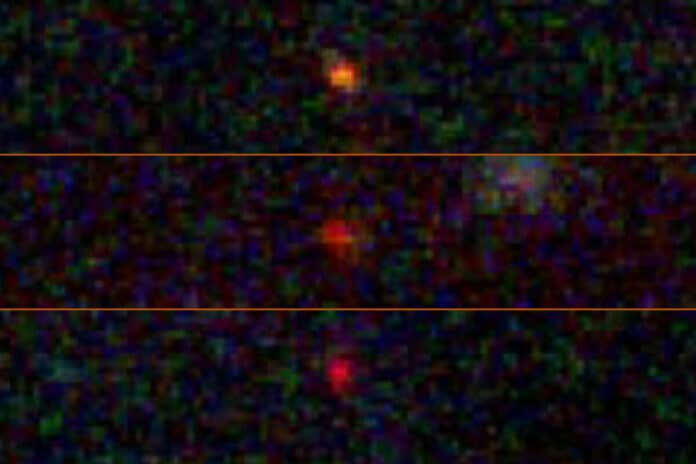The first generation of stars in the universe is yet to be observed. There are two leading theories for those objects that mark the beginning of the cosmic dawn: hydrogen burning Population III stars and Dark Stars, made of hydrogen and helium but powered by dark matter heating.
The idea of dark stars was initially proposed in 2007. The first phase of stellar evolution in the universe’s history may be Dark Stars (DS), powered by dark matter (DM) heating rather than nuclear fusion.
Astrophysicists at The University of Texas at Austin, led by Katherine Freese, examined images from the James Webb Space Telescope (JWST) and discovered three bright objects that might be “dark stars”—theoretical objects that are bigger and brighter than the sun and are propelled by annihilating dark matter particles. If they are confirmed, dark stars can potentially shed light on the nature of dark matter, one of physics’ most complicated unresolved mysteries.
Freese said, “Discovering a new type of star is pretty interesting all by itself, but discovering it’s dark matter that’s powering this would be huge.”
Suppose additional JWST observations of the candidate objects’ spectroscopic characteristics, such as dips or excesses in light intensity in specific frequency bands, are made. In that case, it may be possible to determine whether they are, in fact, dark stars.
Confirming the existence of dark stars might also help solve a problem created by JWST: There are too many large galaxies too early in the universe to fit the predictions of the standard model of cosmology.
Freese said, “It’s more likely that something within the standard model needs tuning because proposing something entirely new, as we did, is always less probable. But if some of these objects that look like early galaxies are dark stars, the simulations of galaxy formation agree better with observations.”
The JWST Advanced Deep Extragalactic Survey (JADES) first identified the three potential dark stars as galaxies in December 2022. Their names are JADES-GS-z13-0, JADES-GS-z12-0, and JADES-GS-z11-0. The JADES team determined the objects were spotted between 320 million and 400 million years after the Big Bang using spectroscopic research, making them among the oldest things yet discovered.
Freese said, “When we look at the James Webb data, there are two competing possibilities for these objects. One is that they are galaxies containing millions of ordinary, population-III stars. The other is that they are dark stars. And believe it or not, one dark star has enough light to compete with an entire galaxy of stars.”
Journal Reference:
- Cosmin Ilie, Jillian Paulin, et al. Supermassive Dark Star candidates seen by JWST. Proceedings of the National Academy of Sciences. DOI: 10.1073/pnas.2305762120
